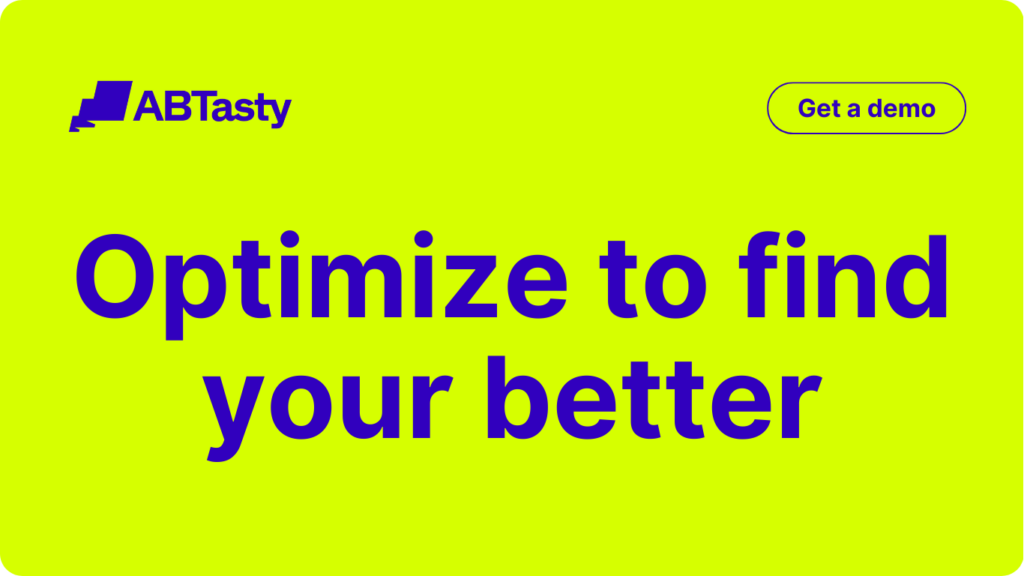We’ve all been there: Mother’s Day is in a few days and you need to buy the perfect gift before it’s too late.
But there’s a major problem: you don’t know when you should place an order and who you should order from. You’re browsing a couple of websites and you see a gorgeous flower bouquet. You scroll down a bit and promptly read:
“Mother’s Day: Order now for on-time delivery.”
That’s it – you need to order now for the bouquet to be delivered before Mother’s Day.
That pressure you just felt? It’s called urgency.
Urgency and scarcity are widely used across marketing campaigns to increase engagement and boost conversions, because it works.
Take Black Friday for example: according to Adobe Digital Insights, that day alone racked up almost $9B dollars in sales in 2021.
Basically, urgent situations push us to act fast and scarcity triggers purchase anxiety, forcing us to act promptly. Put into the right hands, these tools can help e-commerce and online businesses boost their conversions and increase sales.
Before we look into the best practices, let’s take a quick look at the psychology behind scarcity and urgency.
Understand the psychology behind urgency
Urgency is a psychological trigger that is deeply rooted inside our brain: it relates to the human loss aversion or the so-called “fear of missing out” (FOMO).
Scientifically speaking, urgency is a time-based concept that prompts us to act quickly.
Similar to the scarcity principle, FOMO is a kind of social anxiety defined by wanting to stay connected with everyone around you and continually keep up with what they are doing.
When faced with a limited-time offer (e.g. a discount), we automatically start to evaluate if we’re comfortable letting this opportunity get away. In other words, the fear of missing out grows.
Understand the psychology behind scarcity
Similar to urgency, scarcity is a psychological trigger that uses quantity to compel us to act quickly. Scarcity triggers a thought that pushes us to place a higher value on objects that are scarce or rare.
Scarcity also triggers our FOMO instinct: if something was running out of stock, we’d also consider the pros and cons of buying it before it’s too late.
Now that we covered the psychological basis behind urgency and scarcity, here are the best practices to apply them in real-life marketing cases.
Scarcity and urgency best practices for marketers
Scarcity and urgency are undoubtedly powerful techniques to increase conversions.
However, they should be used with caution because pushy methods can rapidly become risky for your brand loyalty.
Avoid fake urgency and scarcity
Creating urgency is good, but abusing it is bad.
Some stores go all out and put everything on sale all year long, creating the feeling that everything is a bargain.
In the image below, you can see that the page gives the impression that every item is on sale. When everything is on sale, your customers realize that nothing really is and you’ll lose credibility.
Scarcity tactics don’t perform well when perceived as manipulative.
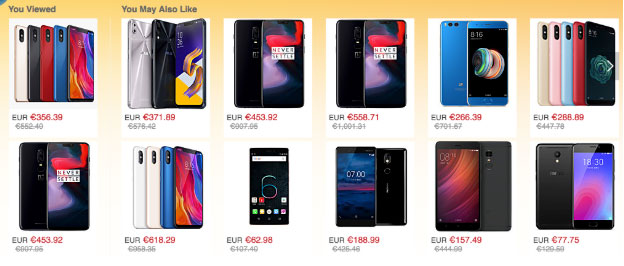
As a rule of thumb, only display genuine offers and don’t abuse them. Occasional sales are enough and generally more powerful.
Use the right vocabulary
As we’re exposed to sales and promotional offers all the time, sometimes it’s hard to distinguish fake sales from real bargains.
To avoid sounding too pushy, try not to use too many flashing banners—your visitors should be able to sense a real bargain at first glance.
Create powerful CTAs
Similar to the carefully chosen vocabulary, your call-to-action should state a real benefit and emphasize the urgency/scarcity.
For example, it’s a common practice to indicate the remaining stock in order to trigger the scarcity instinct.
You can see in the image below that Walmart is using this tactic by displaying “only 3 left!” below the price.
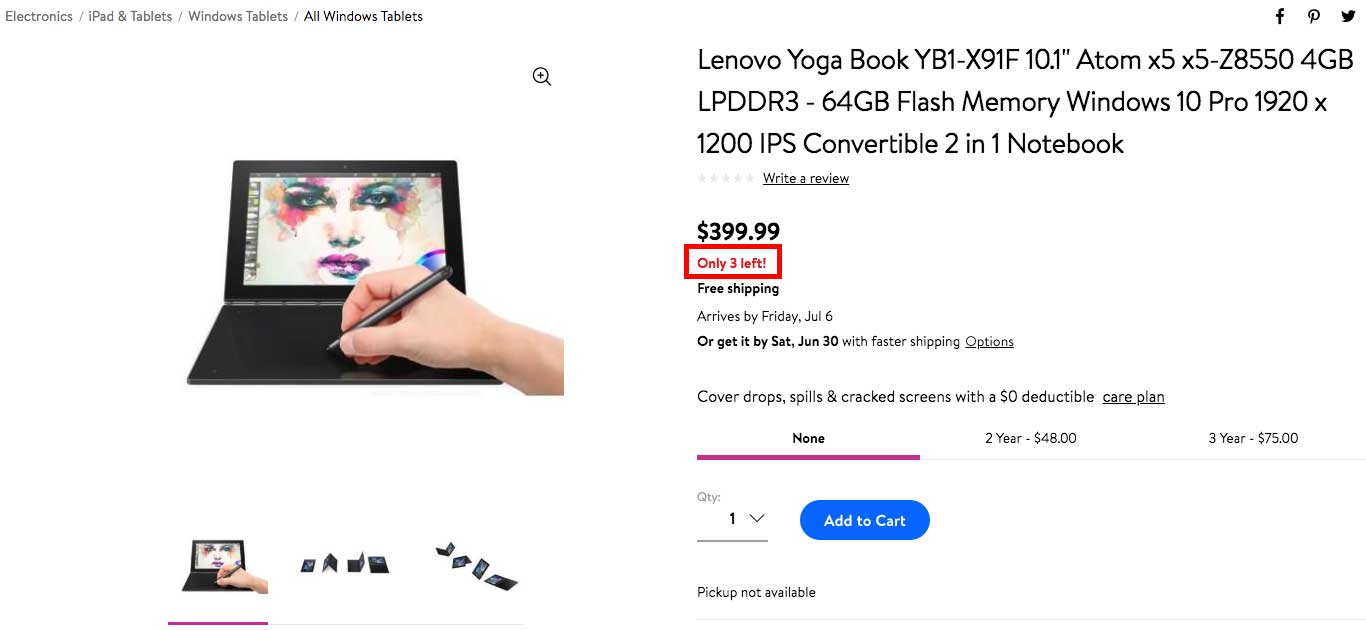
Personalize your messages
Crafting personalized messages is a major trend we see in digital marketing.
Whether in B2C or B2B, 1:1 personalization yields major benefits and overall better conversions.
Because it’s so efficient, adding hints of scarcity and urgency to your personalized messages could dramatically increase your sales.
Here are a few tips that you could use to implement scarcity-based personalized messages:
- Additional personalized product suggestions
- Dynamic text insertion
- Email campaigns using marketing automation
- Contextual Targeting
Want to get started on personalizing your content? AB Tasty is the complete platform for personalization and experimentation equipped with the tools you need to create a richer digital experience for your customers — fast. With embedded AI and automation, this platform can help you achieve omnichannel personalization and revolutionize your brand and product experiences.
5 Real-life examples of scarcity and urgency tactics used to increase conversions
Now that we’ve covered the best practices in scarcity marketing and urgency marketing tactics, let’s see some real-life examples.
Booking.com
Booking.com does an outstanding job of triggering a sense of urgency among its visitors. In the image below, you can see that they indicate how many times a given hotel was booked in a 12 or 24-hour period.

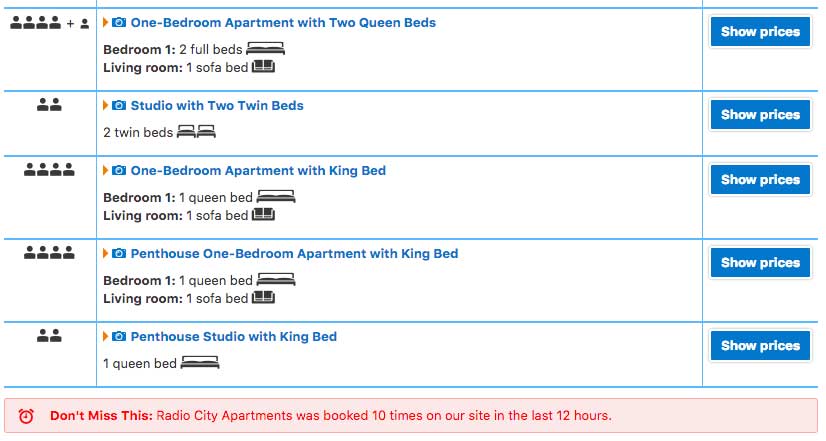
On top of that, they use messaging to enhance this sense of urgency such as: “Don’t Miss This” or “In High Demand!”
Using scarcity methods, Booking.com can boost internal competition in order to provide a superior service to its customers.
OnePlus
OnePlus is a smartphone company that became popular in a matter of months by playing solely on the scarcity tactic. They created a smartphone that you could only buy if you were invited.
It was impossible to buy this smartphone from any store and you could only order it directly from their website.
By creating a sense of exclusivity, OnePlus triggered a massive fear-of-missing-out effect that spread within the tech-savvy community.
Their daring marketing campaign was mostly based on the scarcity principle and led to a massive 1M unit sales and 25 million visits to their website.
Sushi Shop
In the food delivery industry, avoiding late deliveries is a tremendous challenge, considering that the average worker only dedicates half an hour for lunch breaks.
Marketers at SushiShop (a French leader in sushi delivery) wanted to test an urgency marketing tactic to see if it could yield any positive results.
Having this in mind, AB Tasty helped the brand introduce a stress marketing tactic based on the urgency principle.
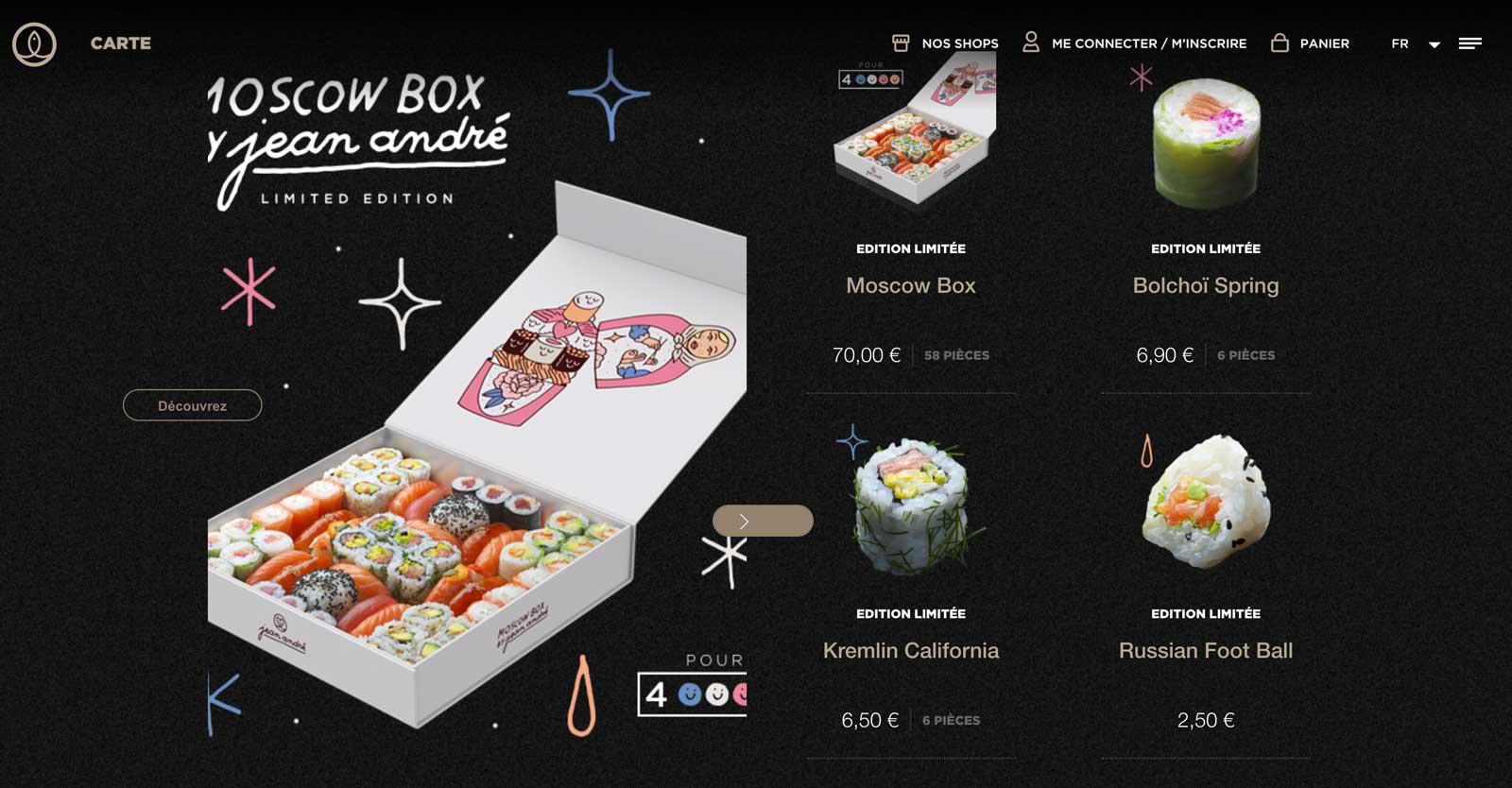
In order to do so, we implemented a sticky banner at lunchtime on their mobile app to urge customers to pre-order. The idea was that they could pre-order to guarantee a satisfying delivery time and avoid late deliveries.
The results were very positive. They saw a 3% increase in cart order confirmations.
Amazon
As the largest e-commerce company in the world, Amazon is an obvious choice when it comes to scarcity and urgency examples.
On top of their nearly perfect product pages and listing pages, Amazon also has a “Today’s Deals” section where limited offers are displayed.

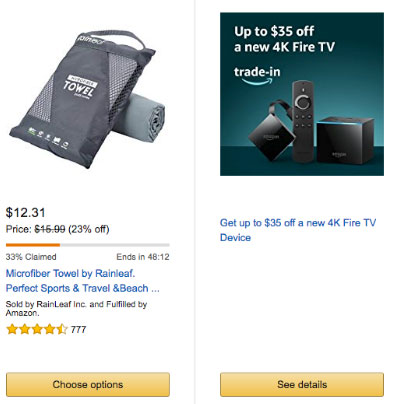
Their product listing cleverly displays your savings in order to highlight the price difference.
Furthermore, some products come in a limited quantity: Amazon uses this scarcity method to display the remaining stock.
In this case, 33% have already been claimed.
Using this strategy, Amazon manages to create a real sense of scarcity and urgency while not being too pushy in the process.
Basecamp
Basecamp is a famous communication and project management software known for making teams’ lives easier.
Besides its fancy visual identity, this company uses clever urgency tactics to make you feel like you’re missing out on something if you don’t use Basecamp.
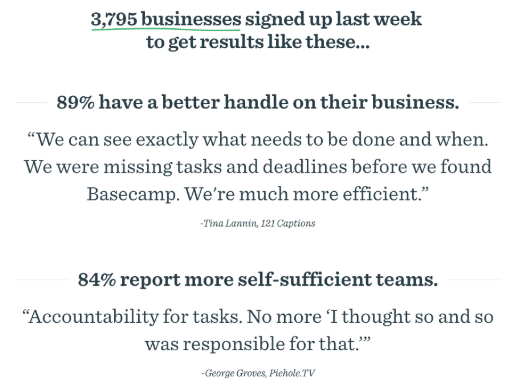
By quoting real numbers from clients’ statistics, Basecamp clearly illustrates the benefits of using their product.
They even mention how many businesses have signed up in the last week.
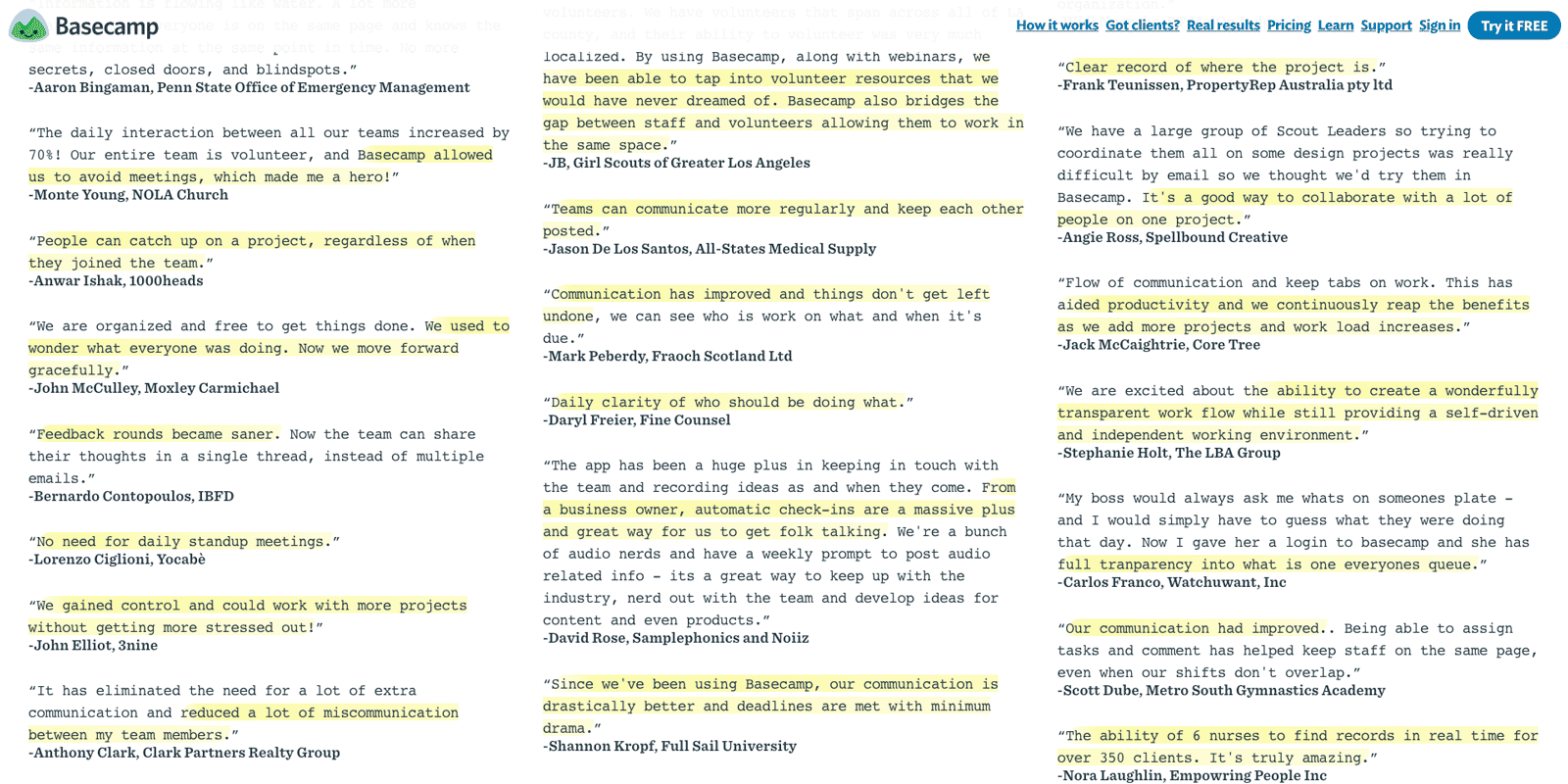
On its “Real Results” page, Basecamp displays a huge number of customer reviews. Seeing all of these reviews could make you feel like the whole planet is using it, and that’s exactly what they want: The end goal is to trigger your FOMO.
Benefits of scarcity and urgency marketing tactics
In the hypercompetitive marketplace today, brands need to focus on winning customer attention in order to increase conversions.
Scarcity and urgency marketing are two very important approaches that can help increase the conversions that you’re after, gather new leads and close more deals. Just remember to apply urgency and scarcity responsibly – you don’t want your visitors to lose trust in your company.
These tactics can help you avoid the overuse of pushy advertisements on your website but still add light pressure on visitors to complete their purchases.
Encourage your visitors by using some of the urgency or scarcity tactics highlighted in the article above to see your conversion rate skyrocket.




